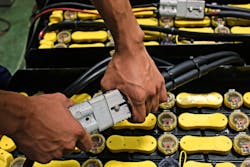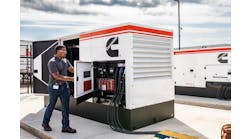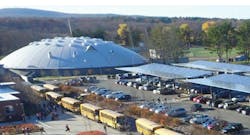How JEA defines beneficial electrification in Jacksonville, Florida
The story is part of a special report series about utility value-added services, including microgrids, electric vehicle (EV) charging and demand response.
The community-owned, Jacksonville, Florida-based utility JEA operates in a unique regulatory environment in which some of its programs are subject to state regulation, but its electrification efforts are not. This allows JEA to define what electrification means and to design innovative electrification programs that create shared benefits for the company, customers and the grid.
As detailed by JEA's Strategic Segment Manager of Customer Solutions and Market Development Tony Reynolds in a webinar hosted by consulting firm ICF, JEA’s electrification programs are intended to create value across four dimensions:
- Financial value through revenue increases or reduction in system costs.
- Environmental value through greenhouse gas emissions reductions and improved air quality.
- Community impact through the creation of job opportunities and economic growth.
- Customer value through improved service and quality, business expansion and rate stabilization.
To achieve those four dimensions of value through electrification, the utility designed programs to drive strategic load growth (particularly off-peak loads), electric vehicle adoption, emissions reductions, and customer satisfaction and achievement of customer business objectives.
“Electrification is affordable,” said Vicki Nichols, JEA director, customer solutions/emerging market development. “Electrification can save customers a lot of money and bring economic development to companies, too. It is a powerful tool.”
Of its electrification-focused programs, the largest is the JEA Electrification Rebate Program, which promotes the use of electric equipment as an alternative to diesel- and propane-powered equipment. The program helps customers save money, improve local air quality and reduce greenhouse gas emissions.
Designed for business, military and government customers, the program is now operating in an expanded third phase and is available to the utility’s 30,000 commercial and industrial (C&I) accounts. Rebates are available for electrification technologies including EV charging infrastructure, electric school and public transit buses, forklifts, baggage and tow tractors, belt loaders, golf carts, scrubbers and more.
The program is projected to deliver 350 GWh of new energy sales through 2025 and reduce greenhouse gas emissions by 2.7 million metric tons through 2045.
On its website, JEA touts the added value of its electrification rebate program for third-party logistics company Wagner Logistics. Wagner upgraded its fleet of propane forklifts to electric forklifts, and JEA said this beneficial electrification allowed the company to reduce life-cycle costs and fuel consumption of its equipment while creating a safer, more efficient, cleaner and healthier work environment.
“Electrification can save customers a lot of money and bring economic development to companies, too. It is a powerful tool.”
- Vicki Nichols, JEA director, customer solutions/ emerging market development
Complementing the core C&I-focused electrification rebate program, the company also offers electrification-focused programs for residential customers, including its Drive Electric pilot program to support the transition to EVs, a residential solar hot water heating program and a $2,000 storage rebate program for residential customers with existing rooftop solar systems who purchase a qualified battery storage system.
In the future, JEA plans to facilitate the transition to EV fleets through a new electrification program and tap the potential of solar DERs to advance electrification.
On the fleet front, the utility is currently identifying operations that would benefit from electrifying their fleets and engaging those customers in conversations to identify win-win solutions. JEA sees electrification of school bus and freight truck fleets as a particularly effective way to create cleaner air and better health outcomes in the disadvantaged communities it serves.
Download the full report “Exploring the Frontier of Utility Value-Added Services,” courtesy of Enchanted Rock to learn more.







